What to know about microSD cards and Samsung Galaxy devices
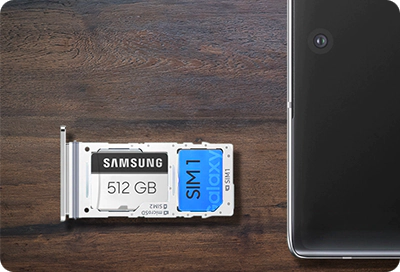
Running out of space on your phone? If your Samsung Galaxy device supports a microSD card, you can use it to expand your storage and easily transfer photos, music, and files between compatible devices. It’s a convenient solution for holding on to the growing collection of pictures, songs, and documents you’ve gathered over the years.
Note: The information in this article applies to Samsung Galaxy devices sold in Canada. Screens and settings may vary depending on the country, model or carrier. For technical reasons, only select models support the use of a microSD card.
Samsung Galaxy phones with microSD card slot
|
Series |
Model |
microSD capacity |
|---|---|---|
|
S Series |
Galaxy S7 / S7 Edge |
Up to 256 GB |
|
Galaxy S8 / S8+ |
Up to 256 GB |
|
|
Galaxy S9 / S9+ |
Up to 512 GB |
|
|
Galaxy S10 / S10+ |
Up to 512 GB |
|
|
Galaxy S20 / S20+ / S20 Ultra |
Up to 1 TB |
|
|
Note Series |
Galaxy Note8 |
Up to 256 GB |
|
Galaxy Note9 |
Up to 512 GB |
|
|
Galaxy Note20 Ultra |
Up to 1 TB |
|
|
A Series |
Galaxy A12 and A14 |
Up to 1 TB |
|
Galaxy A22 |
Up to 1 TB |
|
|
Galaxy A32 and A34 5G |
Up to 1 TB |
|
|
Galaxy A42 5G |
Up to 1 TB |
|
|
Galaxy A52, A52 5G and A54 5G |
Up to 1 TB |
|
|
Galaxy A72 |
Up to 1 TB |
Note: This compatibility list is based on Samsung Galaxy phones officially sold in Canada. Any Canadian device not listed does not include a microSD slot. Other models sold in different countries may offer microSD support, even if they are not listed here.
Samsung Galaxy tablets with microSD card slot
|
Series |
Model |
microSD capacity |
|---|---|---|
|
Tab S Series |
Galaxy Tab S6 / S6 Lite |
Up to 1 TB |
|
Galaxy Tab S7 / S7+ |
Up to 1 TB |
|
|
Galaxy Tab S8 / S8+ / S8 Ultra |
Up to 1 TB |
|
|
Tab A Series |
Galaxy Tab A 8.0 (2019) |
Up to 512 GB |
|
Galaxy Tab A7 (2020) |
Up to 1 TB |
|
|
Galaxy Tab A8 (2021) |
Up to 1 TB |
|
|
Tab Active Series |
Galaxy Tab Active Pro |
Up to 512 GB |
|
Galaxy Tab Active3 |
Up to 1 TB |
Note: This compatibility list is based on Samsung Galaxy tablets officially sold in Canada. Any Canadian device not listed does not include a microSD slot. Other models sold in different countries may offer microSD support, even if they are not listed here.
Unless you're a tech expert, you might not realize that microSD cards come in different formats, each with its own specifications. Beyond storage capacity, they vary in speed and additional features that affect performance and compatibility.
- microSD cards offer a capacity of up to 2 GB.
- microSDHC (High Capacity) cards range from 2 GB to 32 GB.
- microSDXC (Extended Capacity) cards start at over 32 GB and go up to 2 TB.
Each type may also have a speed class rating (typically 2, 4, 6, 8 or 10) indicating its minimum write speed, with higher numbers meaning faster performance.
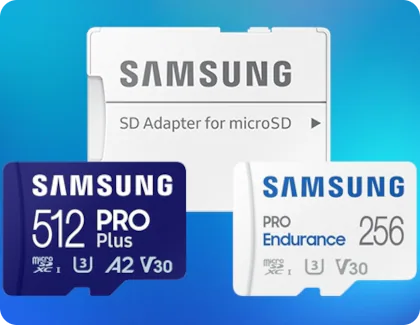
You can use any class of microSD card in a compatible Samsung Galaxy device, but microSDXC cards are recommended for high-resolution video recording due to their larger storage and faster read/write speeds. For lighter tasks like still photography or basic file storage, a microSD or microSDHC card should be sufficient.
MicroSD cards can add a lot of extra space to your phone or tablet, but they’re also very small and easy to lose. Handle the card carefully when inserting it into your device.
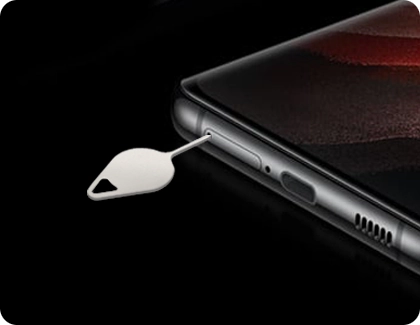
Note:
- Be careful: Do not insert the ejector tool into a microphone or speaker hole along the edge of your device. Look for the outline of the SIM and microSD card tray to ensure you're in the correct spot, or refer to your device's user manual.
- Need a replacement ejector tool: You may be able to get a new ejector tool from your carrier or a local electronics retailer. You can also use a small, unfolded paper clip as an alternative.
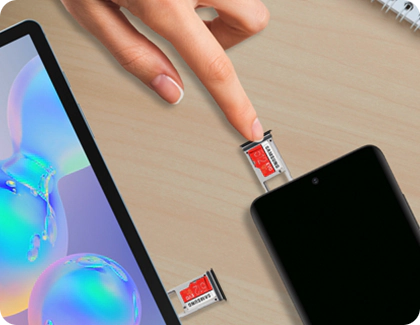
Note:
- Not all models support microSD cards: On these phones or tablets, the tray will have a slot for the SIM card only.
- Tray issues: If you have trouble removing or reinserting the SIM and SD card tray, or if it becomes damaged, service may be required.
Changing the microSD card on your Galaxy XCover6 Pro is a bit different from other Samsung models.
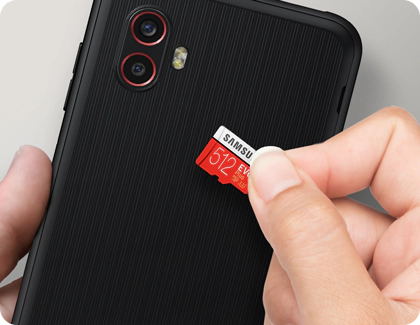
Note: The microSD card slot is located above the SIM card slot.
Once your microSD card is inserted, you can start transferring files to free up space on your device. You can also use the Device care settings to manage storage and move content as needed.

Important: Files can only be moved or copied this way using the My Files app. You cannot transfer files directly to other apps, such as Gallery.
Warning: Not all apps can be moved to a microSD card. Preloaded apps and certain third-party apps may not support this feature.
Before moving an app, make sure a microSD card is inserted in your device. If the Change option does not appear in the app settings, the app’s storage location cannot be changed.

Important: If Change does not appear, the app cannot be moved.
If you use removable storage on your Galaxy phone or tablet, you can protect your files by encrypting the microSD card. Encryption converts your data into an unreadable format that can only be accessed on the device where it was encrypted. While it may sound complicated, Galaxy devices make it easy to encrypt or decrypt your microSD card through the settings.

Important: If your device is factory reset while the SD card is still encrypted, it may no longer be able to read the encrypted files. Always decrypt the card before resetting your phone or using the card with another device.
Need to remove the microSD card from your phone or tablet so you can upgrade or replace it? No problem, just be sure to unmount it first to prevent data loss.
Important: Do not insert the ejector tool into a microphone or speaker hole. Look for the outline of the tray to ensure you are in the correct place.

Note: If the steps do not match your device, you can also use the My Files app. Open the app and scroll to SD card under Storage. Tap the More options icon and select Unmount.
Thank you for your feedback!
Please answer all questions.
RC01_Static Content : Hide call number function
